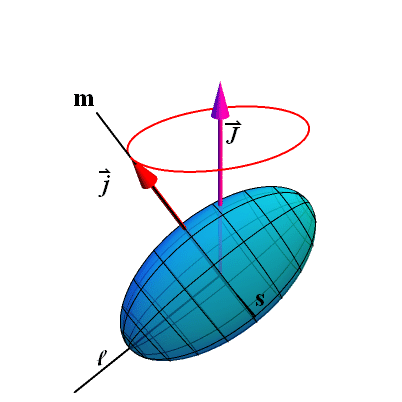
Nuclear wobbling motion and Chirality are the two major Exotic Rotation phenomena that our group focuses on. These modes of rotation are extremely rare and usually originate when particles with high angular momentum couple with the collective motion of a triaxial core. Triaxiality, being an extremely rare phenomenon, is very difficult to establish experimentally. It is however aided by the signatures of wobbling and chirality that are unique to triaxial nuclei. The wobbling motion of a triaxial nucleus can be described as the harmonic oscillation of one of its principal axes about the total angular momentum vector. Chirality, on the other hand, arises when the axis of rotation does not lie in any of the three principal planes of the nucleus leading it to exhibit right or left handedness.
To investigate these exotic modes, we perform experiments at the Argonne National Laboratory using the Gammasphere facility. Gammasphere is an array of 110 compton suppressed High Purity Germanium (HpGe) detectors. It provides an overall efficiency of 10% at 1.13 MeV. Using this powerful array along with its digital data acquisition system, we can acquire statistics that are high enough to allow identification of such rare exotic modes in nuclei.
Selected Publications
- N. Sensharma, U. Garg et al. Longitudinal wobbling motion in 187Au. doi: 10.1103/PhysRevLett.124.052501.
- N. Sensharma, U. Garg et al. Two-phonon wobbling in 135Pr. doi: 10.1016/j.physletb.2019.03.038.
For complete list of publications, click here.